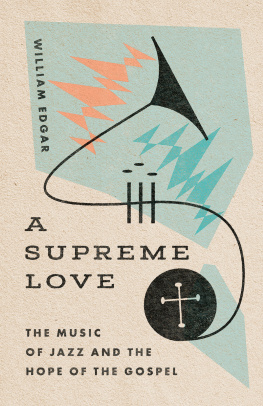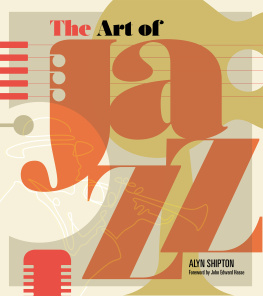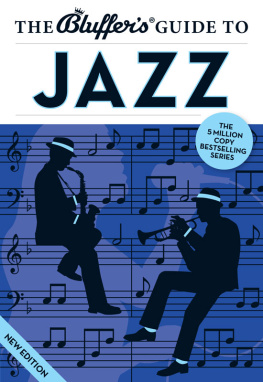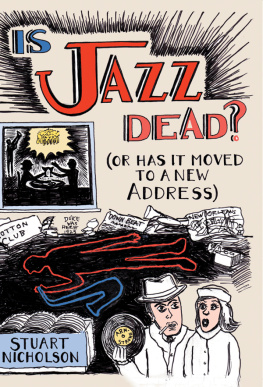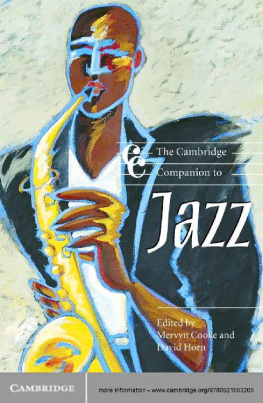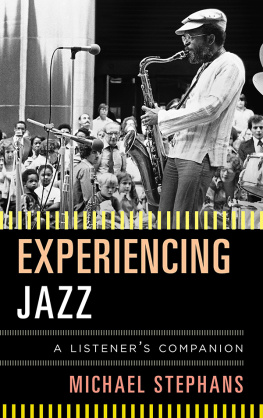BLUE
NOTES
JAZZ,
LITERATURE,
& LONELINESS
BLUE
NOTES
SAM V. H. REESE

Louisiana State University Press
Baton Rouge
Published by Louisiana State University Press
Copyright 2019 by Louisiana State University Press
All rights reserved
Manufactured in the United States of America
First printing
Designer: Michelle A. Neustrom
Typefaces: Sentinel, text; Veneer Clean, display
Printer and binder: Sheridan Books, Inc.
Library of Congress Cataloging - in - Publication Data
Names: Reese, Sam V. H. author.
Title: Blue notes : jazz, literature, and loneliness / Sam V. H. Reese.
Description: Baton Rouge : Louisiana State University Press, [2019] |
Includes bibliographical references and index.
Identifiers: LCCN 2019006818 | ISBN 978-0-8071-7123-3 (cloth : alk. paper) |
ISBN 978-0-8071-7208-7 (pdf) | ISBN 978-0-8071-7202-5 (epub)
Subjects: LCSH: Jazz in literature. | Fiction20th centuryHistory and
criticism. | Musical fiction20th centuryHistory and criticism. |
Loneliness in literature.
Classification: LCC PN56.J38 R44 2019 | DDC 809.3/04dc23
LC record available at https://lccn.loc.gov/2019006818
The paper in this book meets the guidelines for permanence
and durability of the Committee on Production Guidelines for
Book Longevity of the Council on Library Resources. 
CONTENTS
ACKNOWLEDGMENTS
This book was born from memories of jazz: Sitting in my grandmothers house, somewhere around six years old, listening to the same Louis Armstrong tunes with my mother that she used to dance to with her dada grandfather I never met. I was sitting in his shadow when I felt Satchmos horn lift something in me. Aged eighteen, on the precipice of truly embracing who I was, sitting in a silent New Zealand theater beside my dad, watching Ornette Coleman shuffle onto stage seventy - eight and just as mesmerising as ever. The shiver that took hold of me from just the first few notes. The sound of Lonely Woman curling up my spine. Walking out into the night, looking at my father, feeling something changed inside.
Usually, the acknowledgments to an academic book riff on the same old lines: No book is written alone; I give my thanks to the community who helped bring this to life. Wellfittingly, for a book on lonelinessthats not quite the case here. This was an introverted, involuted book, written on long train journeys, in solitary hotel rooms, on the far side of the world from most of my family and friends.
I have had some truly uplifting voices in supportfrom my amazing editor at LSU Press, James Long, whose trust and enthusiasm gave me the extra courage to take this project up; and from Alexandra Kingston - Reese , my collaborator, partner, and eternal inspiration, who first entertained my improvised ideas about the harmolodics of prose, who danced with me to Sonny Rollins on our wedding night.
But mostly, my thanks go to my exceptional parents, who brought jazz and joy into my life. You gave me the tools to be alone, to listen to others, to say something myself.
INTRODUCTION
Feeling Blue
Lonely Woman, the opening track of Ornette Colemans breakthrough album of 1959, TheShapeofJazztoCome, never fails to move and unsettle me. The moaning, dissonant, often wandering conversation between Colemans alto sax and Don Cherrys pocket cornet evokes isolation and sadness in a beautiful, heartrending way. And as Coleman would recount in later interviews, he composed the piece in an attempt to communicate what he saw as a communal loneliness
a feeling that, he believed, almost paradoxically, joined people in a shared experience of isolation. He explained in one interview that he composed the piece while working in a department store in the early 1950s. Coming across a gallery during his lunch break, he saw this white lady in a picture with the most shattering expression you could see on her face. In the background there was everything you could imagine that was wealthyall in her backgroundbut she was so sad. And I said, Oh my goodness, I understand this feeling. I have not experienced this wealth, but I understand the feeling. I went home and wrote Lonely Woman.
Even if we havent read the interview, even if we havent heard the story, or Colemans music, the narrative he recounts and the desired impact of his music are still more than familiar. Today, they are an almost integral part of the myth of jazz and the jazz musician. As a genre that encompasses an almost impossibly wide variety of possible expressions, jazz can of course evoke more than one affective state. It can be upliftingjoyous evenor loaded with political protest. It can ask you to get up and dance or take to the streets. But more than any other emotion, the feeling Coleman describeda shattering sense of lonelinessis consistently associated with jazz.
Indeed, jazz occupies a privileged cultural position (particularly in the United States) as a form of expression that allows its audience to transcend their own sense of being alone through a transformative performance of one individuals deeply felt and keenly expressed solitude and pain. From the start, it is important to recognize this as a storya narrative about the power of jazz that has wide cultural power, even if it elides so many of the ways that jazz has been performed and experienced. It is an imaginative capital that has been richly mined by writers, whose literary representations of jazz have consistently drawn on both the imagery of the jazz genius and the stylistic qualities of jazz (improvisation, syncopation, a nonlinear structure characterized by riffs, and an ongoing tension between soloist and group) to try and explore the limits of human loneliness; in the world of fiction, jazz can offer pathways for negotiating loneliness, or new perspectives that allow solitude to be seen as a positive, life - affirming experience.
I have set out to map this relationshipbetween jazz, loneliness, and literaturethrough a perspective that jazz musicians regularly call upon to characterize their own performances: that of the conversation. Even from the first hesitant sketches of this project, I have understood that I wanted to trace the history of literary appropriations of jazz, both as subject matter and as an aesthetic system, in order to show how different kinds of writers have turned to jazz to explore different aspects of loneliness. As such, the following chapters unpack how writers have used the expansive possibilities of nonlinear novels or adapted the minor aesthetics of the short story to fit different conceptualizations of jazz as a form for exploring loneliness; at the same time, they look at a range of different subject positionsfrom African American to Japanese, female to indigenouswith an attention to how the cultural tropes and symbolic potential of the jazz musician are used to parallel the often subjective pains of being cut off from others.
But a one - way conversation is rarely constructive. And in a world replete with artistic cross - pollination , it is clear that musicians have been just as receptive to writing as authors have been to their sounds. Jazz musicians have often turned to literature for inspiration, sometimes obliquely, sometimes at the center of their work. But they have also used the written word as a way to concretely express something to which their music can only allude, or which they must otherwise affectively evoke. In doing so, they mirror the turn by authors toward instrumental musica form of communication that is abstracted from the language that is their chief resource. In analyzing these exchanges, I try to at once refine and expand the cultural meaning of loneliness; this study is energized by my own belief that, however painful and isolating it may feel, loneliness can also create beauty, empathy, and understanding.
Next page


